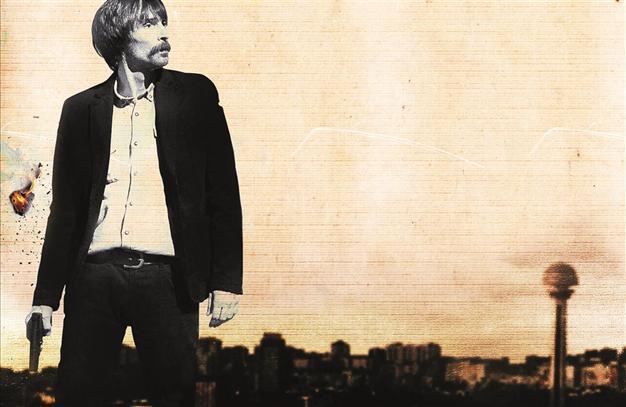Romanticizing Ankara, the city of bureaucrats
Emrah Güler

Behzat Ç., both on television and silver screen, has put Ankara on the cultural map, however, for Istanbul’s artistic elite, Ankara is always a small town with no hint of the chaos, inspiration and history that define Istanbul.
Ankara is a relatively young city that was made the capital of the newly founded Turkish Republic 91 years ago today. It has never been an inspirational city in the traditional sense of the word; there is no seaside setting, nor river passing through that would improve its bleak atmosphere. The green dominating some parts of the city are a couple of decades old in the otherwise monochrome brown that typifies the Anatolian steppe.The first thing you hear from a non-Ankara resident about the capital would be that it’s “the city of bureaucrats.” Then they would go on a rant about the range of government buildings taking over the city. The city they are talking about is no less grim than a dystopian city of haunting fiction. That would have been a defining feature half a century ago when the few grand edifices of the new country were merely the government buildings. Still, the image lingers on.
The capital city is much bigger and more populated than most European cities, with suburbia on four sides taking over the steppes. However, for Istanbul’s artistic elite, Ankara is always a small town with no hint of the chaos, inspiration and history that define Istanbul, making the old Constantinople the default setting for any work of art.
Take the 2011 romantic drama “Aşk Tesadüfleri Sever” (Love Just Coincidence) by director Ömer Faruk Sorak, where the star-struck lovers bump into each other in Ankara during their childhood and youth, only to have the relationship blossom into something else in Istanbul. Ankara here is the epitome of puppy love, while Istanbul embodies the glories and complications of adult relationships. It was no surprise to see one of the characters utter, “Have you seen anyone who’s moved to Istanbul go back to Ankara?”
Despite its obscene growth in the last couple of decades, Ankara continues to be a slow city, giving the occasional feeling that time is somehow suspended. Those who have lived in the capital, and those who still do, know a different Ankara. For them, it is a city that pushes you to talk with one another, a city that inspires in its peaceful routine, and a city that encourages you to stay in closed spaces and then go out again on a spur. No wonder most of the writers of Turkey’s modern literature are from Ankara (even if most of them have flocked to Istanbul).
Putting Ankara on the cultural map
For a heartfelt and romantic (but not romanticized) glimpse at Ankara, “Bizim Büyük Çaresizliğimiz” (Our Grand Despair) would be one of the first recommendations – both the 2004 novel by Barış Bıçakçı, and the 2011 movie adaptation by late director Seyfi Teoman. The story of two 30-something men, childhood friends and roommates, and how their relationship is disrupted by a woman coming into their lives and their home – where Ankara hovers throughout – takes center stage in the story.
The Ankara, together with the people of Ankara we see in “Bizim Büyük Çaresizliğimiz,” is an uncannily familiar place to those who have lived in the city. As the unique relationship between the two friends, and with their new roommate, alternates between tension and peace, and back to tension again, Ankara takes on a major role. The city allows them space for breathing, pondering over the nuances of a rollercoaster relationship, and recovering, with the film becoming an ode to the city at its most familiar.
Then there is Behzat Ç. who put Ankara on the cultural map, making the city, perhaps for the first time, cool. Behzat Ç. first won the hearts of little more than a handful readers as the protagonist (or more appropriately, the antagonist) in young writer Emrah Serbes’s detective novel, “Behzat Ç. Her Temas İz Bırakır” (Every Touch Leaves a Trace), published in 2006. The book was promoted as “an Ankara crime story,” and featured a maverick homicide detective, an unlikely anti-hero who immediately earned his own cult followers among modern Turkish literature.
The second novel in the series “Behzat Ç. Son Hafriyat” (The Final Excavation) of 2008 brought in further devoted readers and new fans of its protagonist, leading to what would become a cult TV series that was co-created by Serbes himself and acclaimed director Serdar Akar. The series, debuting in late 2010, featured a different part of Ankara in each episode as the setting of the dark crime stories. Staying true to the spirit of the novels and keeping Ankara as the location paid off, as the grey “city of bureaucrats” perfectly fit the dark, antagonistic crime stories.
















